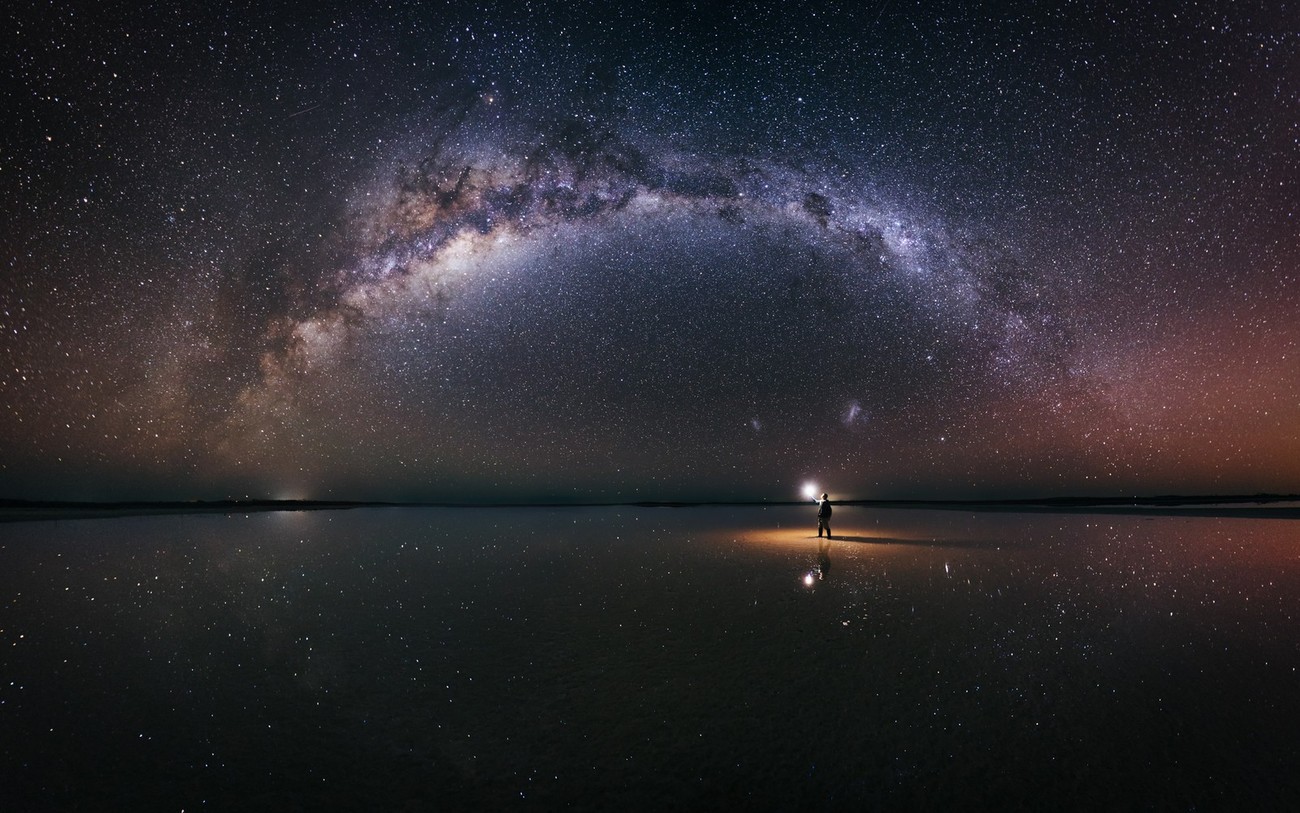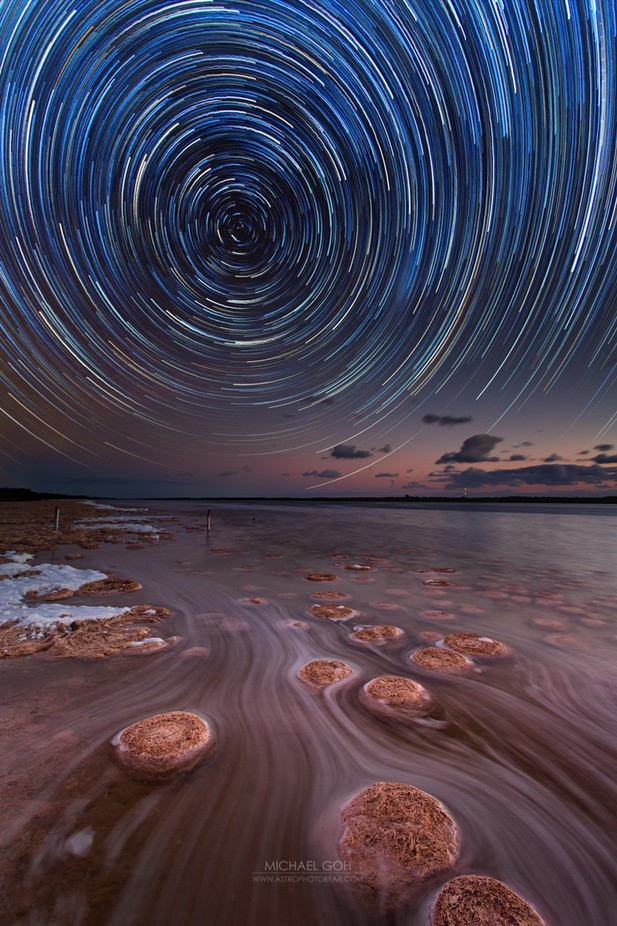The People's Choice recipient in Trey Ratcliffs Put Your Best Foot Forward Photo Contest was Astrophotobear with the photo "Exploring the Great Expanse". Here's the opportunity to learn how this shot was taken and the tricks behind it.
The image is a panorama made out of 32 images (2 rows) at 15mm F2.8 ISO 6400 30s. The settings for each frame is the same. I've post processed the image in lightroom and photoshop - probably 80-90% of it is just using curves, colour balancing and masking and using topaz denoise to assist with further noise control. The panorama is stitched together using PTGui Pro. I'd love to have brought out the milky way core reflection more - however due to the shallowness of the salt lake (it's white - you can see some of the textures of it underneath the water if you look carefully) and I don't want to artificially put the milky way into the water.
The photo was taken at a salt lake - Lake Dumbleyung in Western Australia. Lake Dumbleyung is around 280km away from Perth, the capital of Western Australia. Salt lakes change a lot throughout the year, sometimes having a layer of water and sometimes having pressure ridges from drying salt. We have magnificent skies for astrophotography with low light pollution in many areas. The photo was taken on the 11th July around 7:30pm. Winter is often good for astrophotography due to cool weather being good on the sensor and making the sky clearer. I had been waiting for reasonably clear skies and most importantly still air to allow for star reflections to come off the lake. The lake is only a few inches deep, so allows me to walk on the hardened salt surface beneath to make it appear that I am standing in the stars.
I've used exposure settings to expose enough to try and bring out some more of the star reflections in the water. Reflections off the water will tend to lose light, so I've wanted to capture as much as possible. The lighting for the self portrait is something I developed for what I've called my "wanderer" series - which has me holding a speedlite with a gary fong with a CTO gel to create an orange glow around me. The idea for the lighting is that the gary fong allows the light to spread around me. It's more or less inspired by movies and an old dungeons and dragons sort of history for an exploring character holding aloft a torch when exploring (there's actually a whole other story of how this lighting got started). Depending on the environment, it has helped to create more depth to an image rather than flat star light. My favourite astrophotography lighting is crescent moon light, followed by this form of lighting. Because it's a panorama though and a self portrait - the process of a self portrait is that I only actually need to be in one of the panorama frames, but to ensure that the lighting is consistent for all the other panorama shots - I replace myself with a tripod or light stand to keep the light in the same place. I used a Canon 6d, Tamron 15-30mm lens, 2 tripods, speedlite (with CTO gel), gary fong lightsphere and wireless trigger ... and gumboots.
The wanderer series that I have - has myself in self portraits exploring various astrophotography scenes. I've ended up in a few photography magazines with it. I had visualised myself standing in a sea/lake of stars - effectively lost in eternity. This is often what it feels like gazing up at the stars as an astrophotographer - awed by the enormity of it. I deliberately balanced the composition to have myself weighted against the milky way core. For this particular image - I wanted to emphasise scale with the milky way - so for this self portrait stood a further away from the camera, but wanting to maintain some detail in myself within the image. For this particular image - I'd been watching weather forecasts for almost a year - matching the positioning of the milky way with the moon cycle, the cloud cover and the wind speed.
I use a thinktank streetwalker hard drive - has loads of space, very comfortable and is just the right dimensions to carry onto a plane. Canon 6d (it's a great astrophotography camera for it's noise control), tamron 15-30m f2.8 (this was the first time I used it for an astrophotography shoot - it's great for the sharpness and low coma for astrophotography), 1-2 speedlites with wireless triggers, gary fong lightsphere, rogue flashbender, lee filters, a black piece of cardboard (for black carding), canon 50mm f1.4, tamron 90mm f2.8 macro, canon 70-200mm F4, flash gels, multiple torch lights and headlamps, hand warmers (to help deal with lens fogging), wireless intervelometer, spare batteries, magnetic compass, handheld gps, a bear. Various other items that depend on the trip.
Crescent moon lighting is the best for astrophotography as it lights the landscape with directional light. Cool weather helps with keeping the noise down and increases the clarity of the sky. Push your camera to it's limits by finding the right signal to noise ratio for your camera. Don't think your camera isn't good enough - you can take decent images with an entry level DSLR with kit lens. Can even take images with a compact camera if it has full manual controls.
Landscape astrophotography images are sometimes easier to shoot than many landscape images because you can tell exactly where the milky way core will be at any time. Don't forget the foreground - if you only pay attention to the milky way - it could have been taken anywhere, it's the foreground that completes the image with the creative composition. Use light - even light pollution to your advantage. Play around with the settings on your camera, don't follow strict rules (such as rule of 500 etc - everything is just a guideline anyway). I can talk for hours on this subject...
Follow Astrophotobear to get inspired and see more amazing images.








